Electromagnetic radiation is released by the flow of charged particles creating an oscillating electrical current. The RF spectrum falls within the 3 kHz to 300 GHz frequency range (▶ Fig. 23.1), and is assigned for use by medical devices including electrocautery. When the current is applied to tissue, it is transformed into thermal energy (heat) due to tissue resistance to particle movement. The therapeutic benefit of RF treatment is based on this tissue-heating effect. When the RF energy is high intensity and focal, cutting and coagulation are achieved as with electrocautery. Most TNRF skin-rejuvenation devices apply the energy over a broad surface, and concurrently cool the skin surface to protect the epidermis. A reverse thermal gradient is created that allows the heat to be targeted to the dermis and deeper tissues (▶ Fig. 23.2).2 Fig. 23.1 Electromagnetic spectrum. The purple arrow indicates the radiofrequency (RF) frequency range. Fig. 23.2 The reverse thermal gradient is depicted in this image. The skin surface is cooled and bypassed, allowing the heat to be delivered only to the deeper levels of the tissue. Inset at right is a thermogram showing the reverse thermal gradient that is created. (Courtesy of Solta Medical, Inc., Hayward, California.) TNRF can be delivered using monopolar, unipolar, bipolar, or newer multipolar devices (▶ Table 23.1).3 Monopolar RF instruments require the patient to be grounded and are more deeply penetrating because the current follows the path of least resistance through the skin and deeper tissues and out through the grounding pad. Unipolar RF delivery has one electrode but does not require a separate grounding pad because the grounding plate is within the treatment head. Transcutaneous bipolar devices by their nature penetrate only superficially because the current travels between two surface electrodes (▶ Fig. 23.3). Variations include needle electrodes that can be inserted into the dermis, which provides for a subdermal as opposed to a truly transcutaneous delivery of energy. The newer multipolar devices combine both unipolar and bipolar energy delivery using multiple electrodes and sophisticated computer algorithms to control the flow of the current; however, the treatment remains more superficial because this energy flow is contained within the treatment tip. The depth of RF penetration can be further modulated by factors such as tissue resistance, and is inversely proportional to the frequency of RF used. MONOPOLAR Thermage (Solta Medical, Inc., Hayward, California) Exilis (BTL, Prague, Czech Republic) truSculpt (Cutera, Brisbane, California) Pelleve (Ellman International, Inc., Hicksville, New York) ThermiRF (ThermiAesthetics, Dallas, Texas) UNIPOLAR Accent (Alma Lasers, Inc., Ft. Lauderdale, Florida) BIPOLAR Elos (Syneron Medical Ltd., Yokneam, Israel) Aluma (Lumenis Inc., Santa Clara, California) BodyFX (Invasix, Richmond Hill, Ontario, Canada) MULTIPOLAR Regen (Pollogen Ltd., Jerusalem, Israel) Reaction (Viora, Jersey City, New Jersey) Freeze (Venus Concepts, Scottsdale, Arizona) EndyMed (EndyMed Medical Ltd., Caesarea, Israel) Fig. 23.3 Difference between monopolar and bipolar transcutaneous nonablative radiofrequency (TNRF) treatment. With monopolar treatment, the current (arrows) flows deeper into the skin. With bipolar treatment, the depth of penetration is more bowl-shaped and about one half the distance between the electrodes. Tissue heating has various effects based on the depth of the tissue targeted. Heating the dermis causes partial denaturation of the skin collagen scaffold with contraction of this framework in the x, y plane as the collagen reanneals, leading to initial skin tightening.4 This process also stimulates inflammation and a wound-healing response that ultimately results in increased skin collagen production and epidermal thickening (▶ Fig. 23.4).5 When monopolar RF is used, energy conduction via collagenous fibrous septa in the deep dermis and tightening of these structures allows for three-dimensional contouring and lifting of the skin (▶ Fig. 23.5). Additional heating of the fat layer can lead to selective adipose apoptosis, allowing for further contouring. Fig. 23.4 Skin biopsy (a) prior to transcutaneous nonablative radiofrequency (TNRF) treatment and (b) 4 months after procedure. Note epidermal thickening and increased collagen dermal density. (Courtesy of Julio Barba Gomez, MD and Javier Ruiz-Esparza, MD, Solta Medical, Inc., Hayward, California.) Fig. 23.5 Histology of skin showing the deep dermal fibrous collagen septae, which allow for tightening in the z-axis. (Courtesy of Solta Medical, Inc., Hayward, California.) TNRF was first approved by the U.S. Food and Drug Administration (FDA) in 2002 for the reduction of forehead wrinkles with the Thermage (Solta Medical, Inc., Hayward, California) device (▶ Fig. 23.6).6 Since then, many other TNRF tools have been approved for various skin rejuvenation indications (▶ Table 23.1). In this time span, the Thermage mechanism has evolved over multiple generations and treatment protocols to optimize results, provide more consistency, increase treatment comfort, and decrease the risk of complications. A distinct advantage TNRF has over comparable transcutaneous nonablative laser and IPL skin-rejuvenation techniques is that TNRF does not depend on the absorption of light or laser energy by skin chromophores to have a therapeutic effect. Thus, TNRF energy can penetrate more deeply, and can be used with all Fitzpatrick skin types without concern for unsafe levels of energy absorption in patients with tanned or darker skin. Other modalities such as ultrasound and certain nonablative lasers that use energy outside of the visible spectrum, such as infrared, also share this advantage. Conversely, treatments such as TNRF, which target the deeper levels of the skin but bypass and protect the skin surface, do not address superficial skin aging changes including pigment dyschromias, broken capillaries, and skin textural issues―these are better addressed with modalities such as nonablative lasers, IPL, and superficial skin peels and microdermabrasion. Despite the ability to use TNRF in patients with darker skin types, it is the senior author’s experience that patients with thinner skin (often corresponding to a lower Fitzpatrick skin type), see more substantial improvement with TNRF treatment. Patients with thicker skin and higher Fitzpatrick skin types may require repeated TNRF-type treatment or a surgical lift to achieve their aesthetic goals (since ablative skin-resurfacing techniques are also not an option in darker skinned individuals, to avoid skin pigment-related complications). Because TNRF skin rejuvenation was pioneered by Thermage, their monopolar system has accumulated the most peer-reviewed clinical studies, and remains the gold standard TNRF treatment (▶ Fig. 23.6). Using proprietary capacitive monopolar membrane electrodes, Thermage delivers uniform, volumetric tissue heating, while concurrently cooling and protecting the skin surface with a cryogen spray. The dermis is predictably heated to denature at temperatures of 65 to 75°C,7 which are up to three or four times higher than other TNRF devices. As a result, a single treatment can be sufficient to provide improvement lasting 2 to 3 years. Pressure and temperature sensors at the treatment tip ensure the electrode membrane is in sufficient contact with the skin prior to energy delivery to prevent localized hot spots. Various disposable treatment tips are available at different sizes and heating profiles to target specific areas of the face and body―since the tips are limited to one-time patient use, there is a disposable cost per procedure. Fig. 23.6 Thermage CPT nonablative radiofrequency (RF) skin rejuvenation system by Solta Medical, Inc. The unit is composed of the computer-controlled RF generator with an integrated cryogen cooling module. The ergonomic handpiece, which incorporates a vibration feature to decrease patient discomfort, is pictured attached to the front of the unit. The various disposable monopolar treatment tips that attach to the handpiece are pictured on the right (not to scale). (Courtesy of Solta Medical, Inc., Hayward, California.) Thermage is a monopolar device, and a grounding pad must be placed on the patient. Monopolar energy is more deeply penetrating, and can be more uncomfortable. To address this issue, Thermage rapidly pulses the RF energy many times per second with interwoven cryogen-cooling bursts at each treatment firing; and the latest iteration of the device, the Thermage CPT, incorporates a vibration feature to further distract and minimize discomfort. Deeper penetration of the heat allows the heat to dwell longer, providing greater collagen denaturing. It also allows better three-dimensional lifting and contouring of the skin by tightening the underlying fibrous septa (▶ Fig. 23.5). There are a few other monopolar TNRF devices available (▶ Table 23.1). The BTL Exilis (BTL, Prague, Czech Republic) device is relatively new and delivers continuous RF energy, as opposed to individual treatment fires triggered by the operator. The skin surface temperature is monitored continuously to avoid excessive heating. Because the energy is delivered continuously, treatments can be quicker, but more skill is required by the operator.8 The Ellman (Pelleve, Ellman International, Inc., Hicksville, New York) instrument generator can be used for electrocautery, with add-on aesthetic TNRF treatment handpieces available for skin rejuvenation applications. With the ThermiRF (ThermiAesthetics, Dallas, Texas) tool, cannulas are inserted subcutaneously to deliver RF energy―this therefore cannot truly be considered a TNRF mechanism. The Accent (Alma Lasers, Inc., Ft. Lauderdale, Florida) system allows the delivery of both unipolar and bipolar TNRF using different handpieces. Unipolar energy delivery is made possible by containing the return grounding plate within the treatment head. Use of 40 MHz RF allows penetration of the heat generated to depths of up to 2 cm, targeting deeper subcutaneous fat.6 This therapy has been shown to improve the appearance of cellulite.9 Despite the deeper penetration by the unipolar RF, patients have not found this Accent procedure to be particularly painful. Multiple treatments (from two up to six) may be required to achieve satisfactory improvement.10 The more superficial bipolar RF handpiece is intended to treat surface wrinkles. Treatment heads on the Accent device are reusable and because there is no separate grounding pad required, there is no consumable cost. A number of other TNRF devices also employ bipolar energy. The inherent disadvantage of bipolar devices is that the heat does not penetrate as deeply (▶ Fig. 23.3); however, as a result, treatments are in general associated with less pain and studies have shown cosmetic enhancement.5 Syneron (Elos, Syneron Medical Ltd., Yokneam, Israel) first introduced the concept of combining bipolar RF with other types of energy (IPL, diode laser, infrared) to obtain a synergistic effect. The Aluma system from Lumenis (Lumenis Inc., Santa Clara, California) first used a vacuum device to mechanically suction skin up between bipolar electrodes to maximize dermal penetration,11 also promoting lymphatic drainage and stimulating circulation. The Aluma device is no longer commercially available, but others including the BodyFX device by Invasix (Invasix, Richmond Hill, Ontario, Canada) have adopted this same treatment mechanism. Over the past few years, devices that use multipolar TNRF as well as microneedle electrode arrays, fractionated RF delivery, variable RF frequencies, and even combined with magnetic pulses have become available. All of these newer approaches are relatively recent, and although they may hold promise, there currently is a paucity of studies to conclusively support their efficacy. As skin ages, there is a progressive depletion of the underlying collagen scaffold, resulting in skin that is thinner, more fragile, and prone to wrinkling and sagging. Pores become enlarged and capillaries appear more obvious because there is less collagen surrounding and supporting these structures. Photoaging causes skin damage by solar elastosis where collagen in the dermis becomes disorganized, breaks down and loosens, and elastotic material accumulates in the dermis as the skin’s elastic framework degrades. Ultrastructural studies have shown that TNRF treatment denatures dermal collagen, melting the triple helical configuration of collagen.4 As the skin cools, the collagen reanneals into tighter, more compact bundles, resulting in initial skin tightening. Longer term, the heat from TNRF treatment is thought to stimulate an inflammatory wound-healing response with activation of dermal fibroblasts. This results in the production of new collagen and elastin.12 Studies show that there is an increase in newly synthesized type I collagen, as well as total mature type III collagen, at the end of treatment and at 3 months posttreatment compared to baseline.4,13 Histology of TNRF-treated skin shows a significant rebuilding of the dermal collagen framework as well as epidermal re-thickening (▶ Fig. 23.4). This histological appearance of the skin is more consistent with youthful skin. TNRF may also play a role in treatment of hypertrophic scars by remodeling collagen, and in treating acne due to the heat sterilizing bacteria in the skin.7 TNRF is best for patients requesting subtle, more gradual skin tightening and toning. The ideal patient is in the mid-30s to mid-60s with mild to moderate, but not severe, loosening of the skin.7 Patients who have had a surgical lift and are looking for some additional touch-up tightening are also good candidates. Patients with more advanced skin sagging may still benefit from the maintenance advantages of TNRF skin rejuvenation―by rebuilding the collagen framework, the pace of additional skin loosening is reversed or slowed. In the face, TNRF treatment has been shown to tighten the forehead and lift the eyebrows, smooth loose periorbital and eyelid skin, soften the nasolabial folds, and tighten the lower face and anterior neck, thereby softening the marionette folds and better defining the jawline (▶ Fig. 23.7). Body areas targeted include loose skin of the abdomen, flank, buttocks, underarms, and thigh/knee area. Fig. 23.7 (a-d) Two examples of typical patient results 9 months after transcutaneous nonablative radiofrequency (TNRF) treatment with Thermage. Lifting and stabilization of the brow, tightening of the eyelid skin, and improvement in the midface profile and jawline are evident.
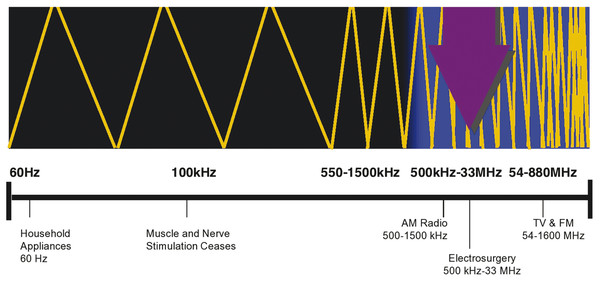
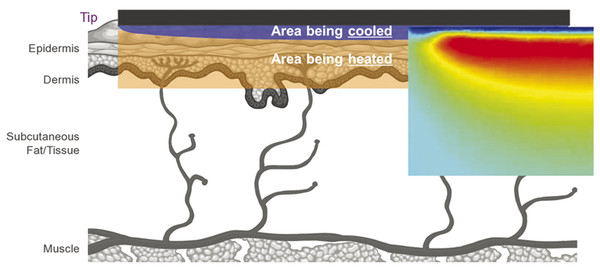
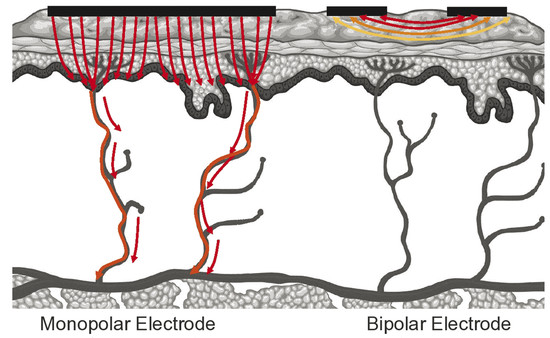

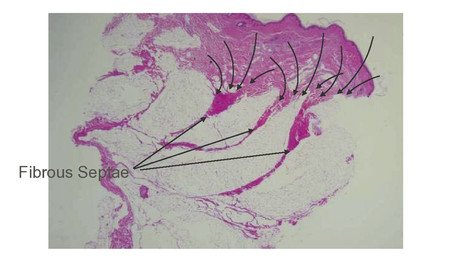
23.2 Advantages/Disadvantages
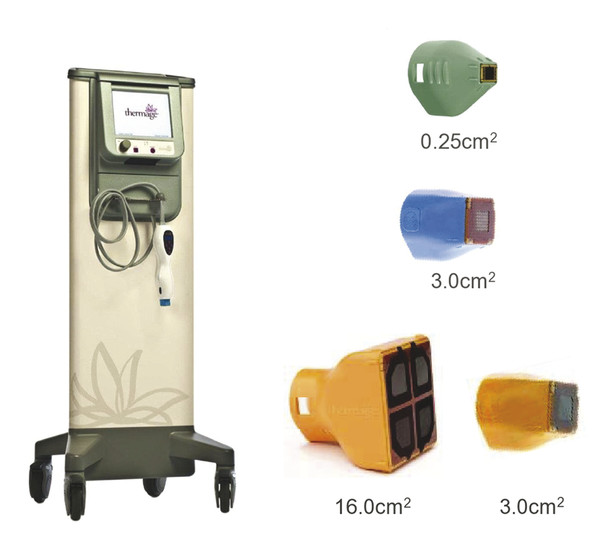
23.3 Pertinent Anatomy
23.3.1 Indications
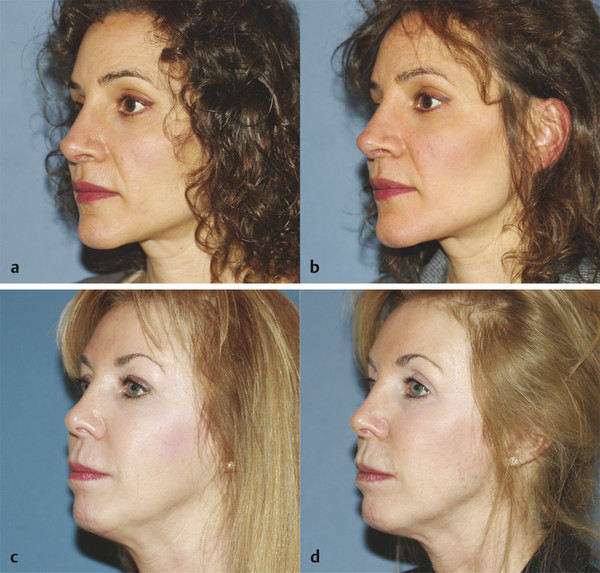
Radiofrequency Skin Tightening
Only gold members can continue reading. Log In or Register to continue

Full access? Get Clinical Tree








